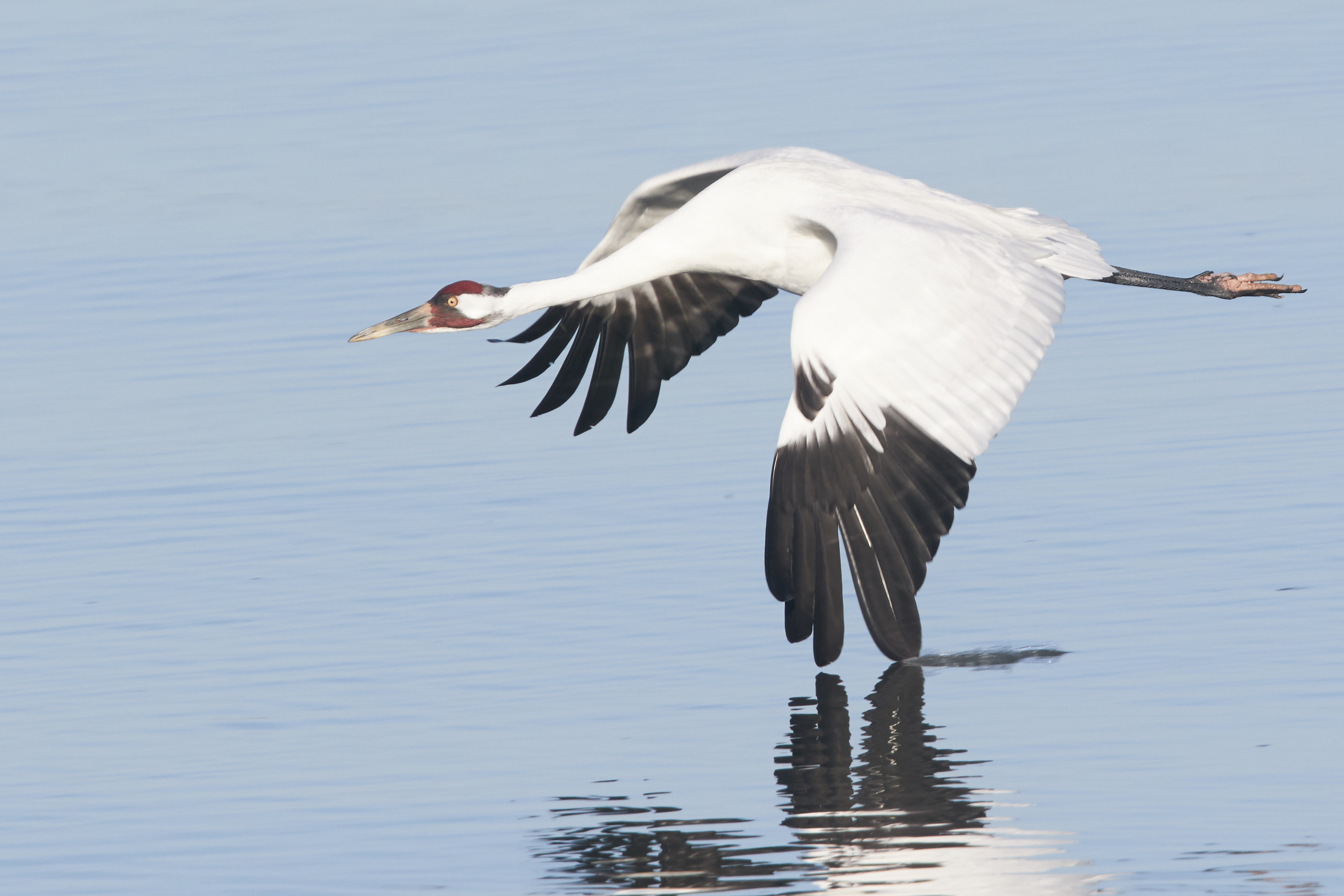Whooping crane is a rare North American bird named for its loud, buglelike call. Whooping cranes, also called whoopers, are the tallest birds in North America. Adults stand up to 5 feet (1.5 meters) tall, with long legs and a long neck. They have white feathers, with black-tipped wings, a black mask around their eyes, and a patch of red on their heads. Young whooping cranes are cinnamon or rusty-brown. The whooping crane has become a symbol of wildlife conservation.

Whooping cranes breed mostly in marshy areas of Wood Buffalo National Park in the Northwest Territories of Canada. The female usually lays two eggs on marshland in a nest made of surrounding vegetation. Typically, only one chick survives. After breeding, the whooping cranes from Wood Buffalo migrate to Aransas National Wildlife Refuge in Texas for the winter.
Loading the player...Whooping crane
Whooping cranes are omnivores—that is, they eat both plants and animals. But they feed mostly on such prey as clams, crayfish, fish, frogs, and insects.
Whooping cranes once nested predominantly in the north-central United States and Canada, but a separate group lived in Louisiana the year around. Whoopers declined significantly from the mid-1800’s to the early 1900’s as settlers hunted them and disturbed their habitat. By 1870, there were only 500 to 700 cranes left. Their numbers reached a low in the winter of 1941-1942. At that time, only 15 or 16 birds were wintering in Texas, and another 6 were living in Louisiana. In Texas, whooping crane numbers gradually increased. But whooping cranes completely disappeared from Louisiana in 1950.
Whooping cranes are an endangered species, and the law protects them from hunting and other harm by people. The birds’ breeding and wintering grounds are protected refuges. By the early 2000’s, whooping crane numbers had slowly increased to several hundred birds in the wild and more than a hundred birds in captivity.
From 1975 to 1988, biologists placed 289 whooping crane eggs in the nests of sandhill cranes in Grays Lake National Wildlife Refuge in Idaho. The sandhill cranes acted as foster parents, hatching and raising the young whoopers. Of this group, 84 chicks grew big enough to fly, and many of those survived to adulthood. However, the whooping cranes would not mate with each other. The last of these cranes died in 2002.
In 1993, biologists began releasing young whooping cranes at Kissimmee Prairie in Florida. The first wild chicks in this group hatched in 2000.
Whooping cranes learn migration routes from their parents. During the autumn of 2001, scientists in whooping crane suits used a specially designed small aircraft to lead captive-born birds in an experimental migration. The birds followed the scientists from Necedah National Wildlife Refuge, Wisconsin, to Chassahowitzka National Wildlife Refuge, Florida. The next spring, cranes returned to Wisconsin unassisted. After scientists guided the birds on migrations for several years, the first wild chicks hatched in Wisconsin in 2006.
See also Bird (Endangered species); Crane.
